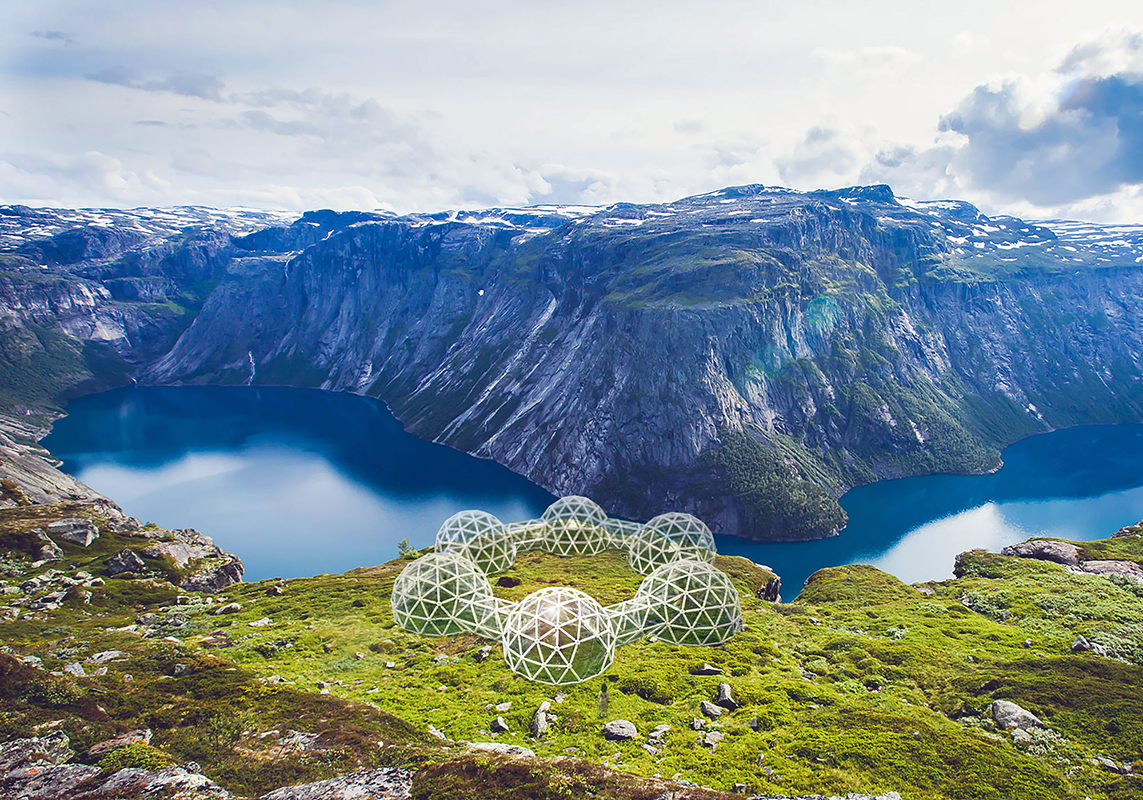Take a Whiff of Cities' Unique Smells with 'Pollution Pods'
And now, visitors to the Starmus Festival — an annual celebration of science, art and culture that will be held June 17 to 23 in Trondheim, Norway, this year — will be able to breathe deeply and compare city smells, thanks to the creators of a large-scale art installation.
In a network of geodesic domes dubbed Pollution Pods, curious visitors will be able to sample reproductions of the air from cities in six different countries: São Paulo, Brazil; Cairo, Egypt; Beijing, China; New Delhi, India; London, England; and Trondheim, Norway. [Gallery: 5 Times Science Inspired Art]
Each pod measures about 20 feet (6 meters) in diameter, and consists of a hemisphere framework constructed from connected triangles of short wooden sticks and covered by a transparent plastic skin, according to a description on the Norwegian University of Science and Technology's (NTNU) website. Short corridors connect the pods, which are arranged in a large circle.
The Pollution Pods emerged from a research project called Climart, which launched in 2014 at NTNU. Climart explores the effectiveness of art installations in communicating climate messages to the public. To that end, project team members have launched climate art installations and investigated the public's response to them, analyzing a total of 37 installations thus far, NTNU representatives said in a statement.
The Pollution Pods project is the result of a collaboration between Climart and artist Michael Pinsky, who uses a range of media to visualize climate change and topics of social importance, according to the statement.

The air, the air is everywhere
Visitors to the domes won't be breathing actual polluted air. Rather, they will be inhaling "harmless ingredients and fragrances" that approximate the smell of pollution that is particular to a given city, Climart project leader Christian A. Klöckner, a professor in social psychology at NTNU, said in the statement.
"The Norwegian Institute for Air Research (NILU) is contributing its expertise to create the right air mixtures for each dome, so that the smell and feel of breathing in the air is realistic," Klöckner said.
Sign up for the Live Science daily newsletter now
Get the world’s most fascinating discoveries delivered straight to your inbox.
And what does the air smell like, in the cities represented in the installation?
"London is primarily diesel fumes," Pinsky told Live Science in an email.
"Delhi is a cocktail of almost everything imaginable — crop burning, diesel, rubbish burning (plastic) and dust," he added. "Beijing is a combination of industrial smells (sulfur), coal and wood burning, which is used for heating. And São Paulo has a smell like vinegar, since they use ethanol for transportation," Pinsky said.
The Trondheim dome, on the other hand, is a less-polluted coastal location, represented by the refreshing aroma of sea air mixed with forest pines, Pinsky said.
Original article on Live Science.

Mindy Weisberger is an editor at Scholastic and a former Live Science channel editor and senior writer. She has reported on general science, covering climate change, paleontology, biology and space. Mindy studied film at Columbia University; prior to Live Science she produced, wrote and directed media for the American Museum of Natural History in New York City. Her videos about dinosaurs, astrophysics, biodiversity and evolution appear in museums and science centers worldwide, earning awards such as the CINE Golden Eagle and the Communicator Award of Excellence. Her writing has also appeared in Scientific American, The Washington Post and How It Works Magazine. Her book "Rise of the Zombie Bugs: The Surprising Science of Parasitic Mind Control" will be published in spring 2025 by Johns Hopkins University Press.









